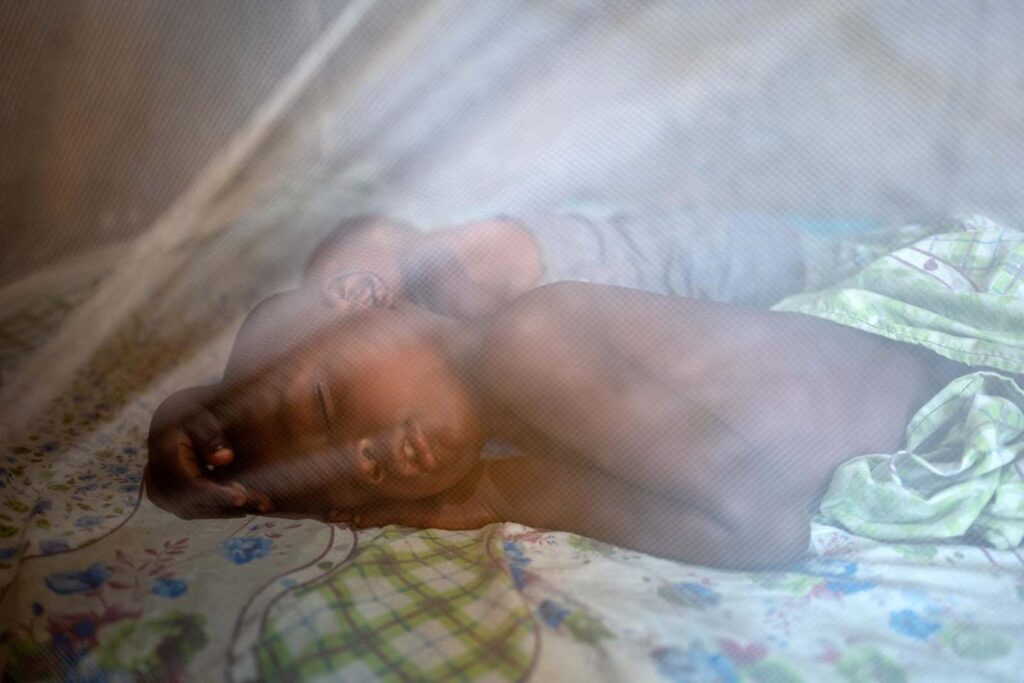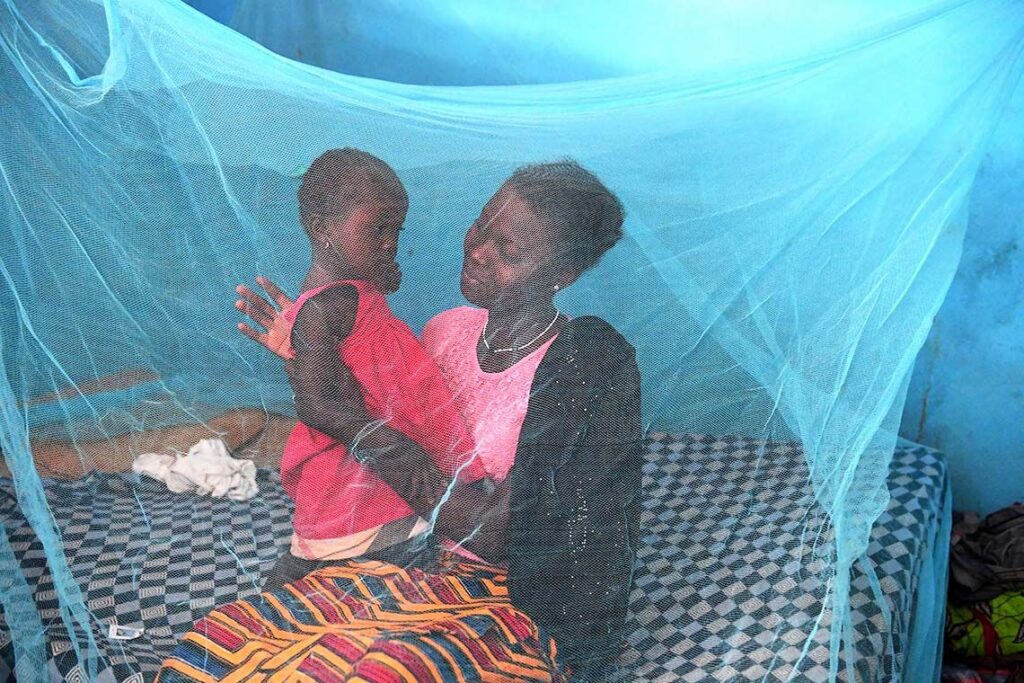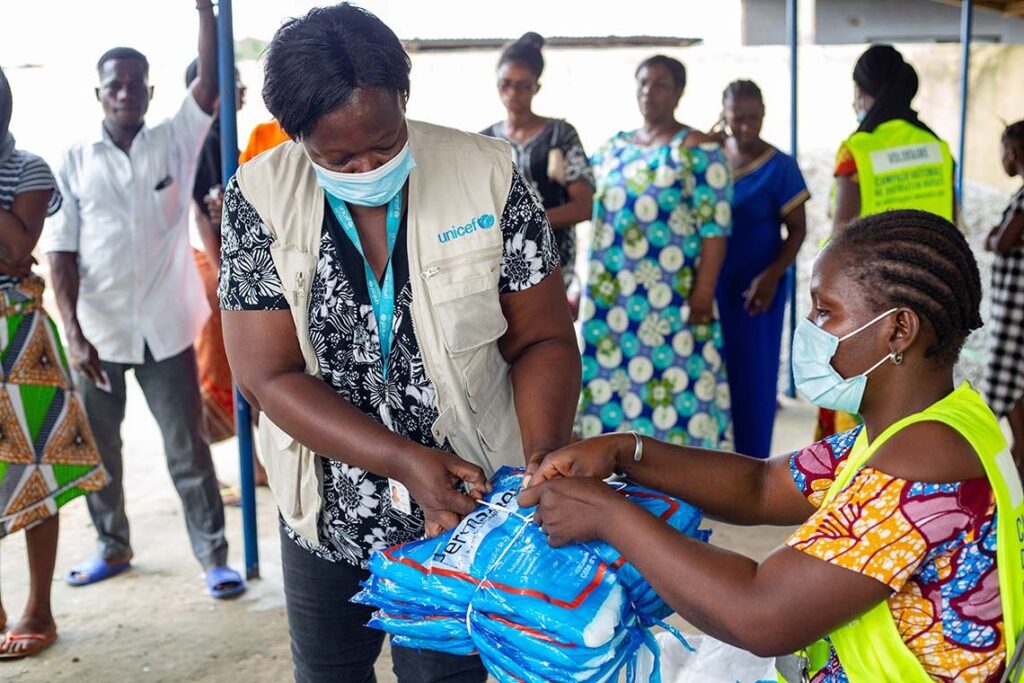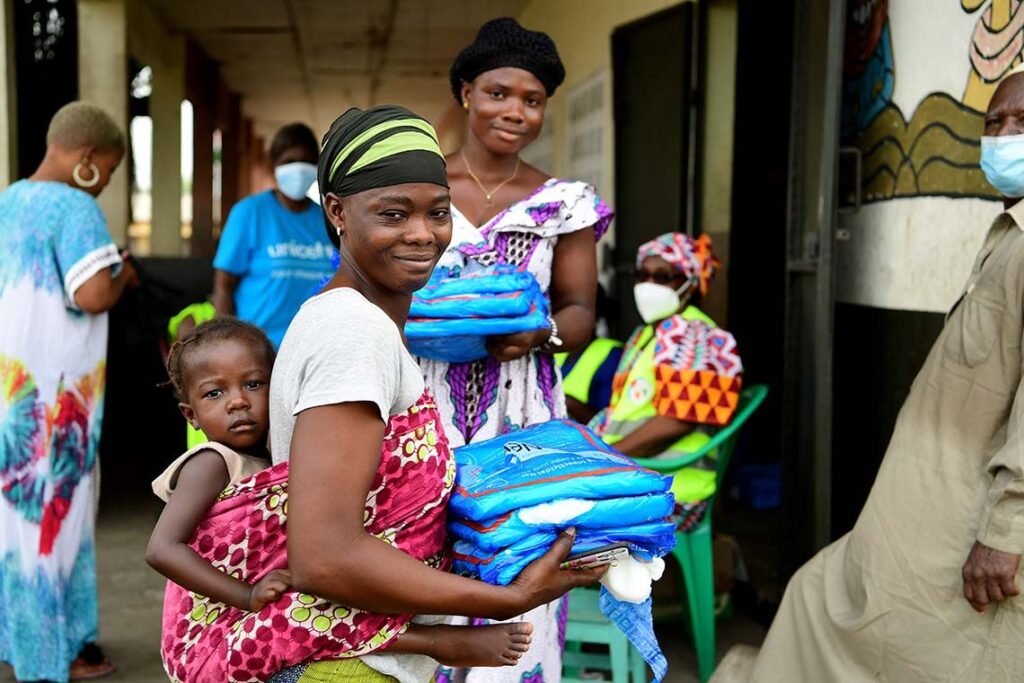Since 2012, UNICEF has delivered more than 275 million LLINs, which are one of the most effective ways to protect against malaria.
Malaria is a life-threatening disease transmitted to people through the bites of infected female Anopheles mosquitoes. According to the World Health Organization (WHO), in 2019, there were 229 million recorded cases of malaria around the world, with 409,000 deaths from the disease. However, it is young children that are the most impacted. In the same year, 274,000 children under 5 years of age died of the disease, accounting for two-thirds of all malaria deaths worldwide.
Sleeping under a LLIN is one of the best ways to prevent malaria, as they form a physical and chemical barrier against mosquitoes. When mosquitoes try to bite someone sleeping under a LLIN, they are not only blocked by the netting, but also killed by the insecticide coating. Studies show that the use of LLINs reduced malaria incidence by 50 per cent in sub-Saharan Africa, in a region which accounts for more than 90 per cent of global cases.
Durability
LLINs are much more effective than untreated mosquito nets because they are produced with netting that contains a WHO-recommended insecticide. Thanks to this treatment, the insecticide effect lasts longer and the nets can be used for up to three years or 20 washes.
UNICEF started buying its first LLINs in 2000 with the purchase of 53,000 nets to support malaria control and prevention in countries affected by the disease. Since then, this figure has grown significantly, although yearly figures fluctuate depending on requests from malaria-endemic countries. Since 2012, UNICEF has delivered more than 275 million nets [updated on 15 February to include recently consolidaded data from 2021].
All LLINs that UNICEF offers through its Supply Catalogue are made of polyester or polyethylene and are part of list of products that meet the quality, safety and efficacy standards set out by WHO. In addition, UNICEF’s quality control teams check if manufacturers followed WHO’s recommendations and if the nets can resist local climate conditions and damage by animals like cats and rats.
The durability of the nets also depends on how they are stored and used. UNICEF, often with partners in local campaigns, works to inform communities about the best ways to care for the nets. For example, users are recommended to wash LLINs as little as possible (no more than five times a year), hang them out to dry in the shade, repair small holes and tie the net to store it during the day.
New generations
Good maintenance and storage soon may not be enough to guarantee the efficacy of some the current LLINs, explains Lama Ramzi Suleiman, Contracts Manager at UNICEF Supply Division’s Health Technology Centre. “Because we have been using these nets for almost 20 years, the Anopheles mosquitoes have started developing resistance to the pyrethroid [insecticide]. We need to continue the research into alternative substances,” she says.
As a result, UNICEF has started offering a second generation of LLINs, which, in addition to the insecticide, use a type of oil called piperonyl butoxide (PBO) to inhibit the natural defence mechanism of the mosquitoes. When the mosquitos’ biological defence is weakened, the toxicity of the pyrethroid kills it.
UNICEF is continuously monitoring the development of new kinds of LLIN that use other families of insecticides capable of killing the mosquitoes. “As soon as these new nets are approved by WHO, we will start offering them to the countries fighting the disease,” explains Suleiman.
Protecting against malaria in Côte d’IvoireIn 2021, a campaign run by the Ministry of Health of Public Hygiene in collaboration with UNICEF and USAID distributed a total of 18.5 million LLINs. “Through this campaign, which took place in April and May 2021, we reached 6,347,558 households, or a total of 32,917,244 people in the 113 health districts. With a distribution performance of over 90 per cent, we have achieved the objectives of universal coverage,” says Marc Vincent, UNICEF Representative in Côte d’Ivoire.
Protecting against malaria in Côte d’IvoireIn 2021, a campaign run by the Ministry of Health of Public Hygiene in collaboration with UNICEF and USAID distributed a total of 18.5 million LLINs. “Through this campaign, which took place in April and May 2021, we reached 6,347,558 households, or a total of 32,917,244 people in the 113 health districts. With a distribution performance of over 90 per cent, we have achieved the objectives of universal coverage,” says Marc Vincent, UNICEF Representative in Côte d’Ivoire.
Protecting against malaria in Côte d’IvoireIn 2021, a campaign run by the Ministry of Health of Public Hygiene in collaboration with UNICEF and USAID distributed a total of 18.5 million LLINs. “Through this campaign, which took place in April and May 2021, we reached 6,347,558 households, or a total of 32,917,244 people in the 113 health districts. With a distribution performance of over 90 per cent, we have achieved the objectives of universal coverage,” says Marc Vincent, UNICEF Representative in Côte d’Ivoire.





 3M
3M Ansell
Ansell Dellta Plus
Dellta Plus Drager
Drager edelrid
edelrid Honeywell
Honeywell JUTEC
JUTEC lakeland
lakeland MSA
MSA New Pig
New Pig Weldas
Weldas